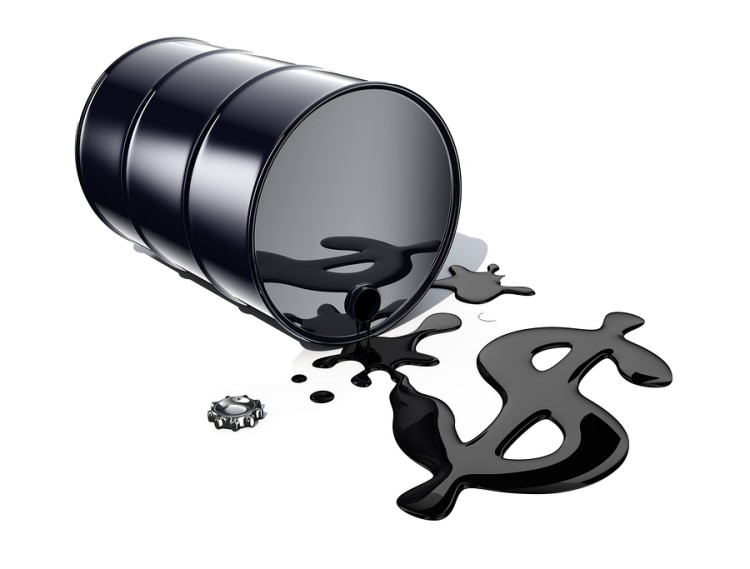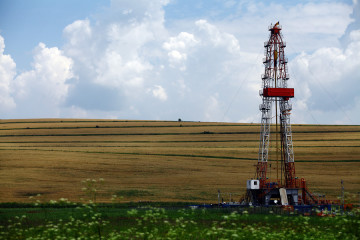Oil Slump to 11-Year Low Just a Taste of Pain Felt by Producers

©2015 Bloomberg News
NZS1N66VDKHT
NZS1N66VDKHT
(Bloomberg) — If oil’s slump to an 11-year low stung traders, it’s just a taste of the hardship felt by the industry. Brent’s plunge to $35.98 a barrel on Tuesday, its weakest intraday level since 2004, was probably painful enough for any remaining oil bulls. But that move was just playing catch-up with the annual average price, already at the lowest in 11 years — a measure more important than intraday fluctuations to those that pump crude from the ground.“Short-term swings are not necessarily something that matters a lot at the corporate level or at the country level,” said Antoine Halff, a senior fellow at the Center on Global Energy Policy at Columbia University in New York. “For countries it’s the average, because that’s the basis of their revenue.” Crude’s slump, the result of the Organization of Petroleum Exporting Countries’ decision to keep pumping and defend market share against rivals, is having a profound impact. Members of the group will forgo $500 billion in revenue this ar, according to the International Energy Agency, putting intense pressure on national budgets. About $1.3 trillion has been wiped off the value of oil companies around the world over the same period, forcing them to lay off workers or cut dividends.
Broad Changes
The world was a very different place the last time oil prices were so low for a sustained period. China was just embarking on a decade-long binge on commodities that would turn it into the world’s second-biggest oil user, while U.S. production was in long-term decline and nobody had heard of shale. The severity of the current downturn is also triggering significant changes across the industry. Ironically, the immediate effect has been to swell, rather than reduce, global production as OPEC and competitors such as Russia jostle for market share and try to offset the price drop by maximizing output. “What’s been remarkable has been the very high level of production from a great variety of producers, against all odds,” said Halff, who was previously head of the IEA’s oil-market division. Russia, Iraq and Brazil have all beaten expectations this year, he said. “What unites them is they need the money in the face of low prices.”
No Limits
OPEC effectively abandoned any limits on its production on Dec. 4, potentially unleashing millions of barrels of additional supply. The group will increase output next year by 640,000 barrels a day to about 32 million as Iran, Saudi Arabia, Kuwait and the United Arab Emirates pump more to counter the impact of lower crude prices, according to Goldman Sachs Group Inc. estimates. As the supply surplus persists there are “high risks” that oil could fall as low as $20 a barrel next year if storage tanks start to fill up, the bank said in a report Dec. 17. West Texas Intermediate crude, the U.S. benchmark, closed at $36.14 Tuesday on the New York Mercantile Exchange. The surge in output in response to low prices probably isn’t sustainable.
Producers are making the biggest investment cuts since the 1980s, with a reduction of 20 percent this year and more to follow in 2016, according to the Paris-based IEA. The number of job losses at oil and gas companies around the world has now passed the 250,000 mark, with still more to come, according to industry consultant Graves & Co.
Producers are making the biggest investment cuts since the 1980s, with a reduction of 20 percent this year and more to follow in 2016, according to the Paris-based IEA. The number of job losses at oil and gas companies around the world has now passed the 250,000 mark, with still more to come, according to industry consultant Graves & Co.
Falling Investment
“Long run, investment will surely drop,” John Browne, chairman of L1 Energy Holdings Ltd. and former chief executive officer of BP Plc, said in a Bloomberg Television interview Dec. 8. “The amount of oil which is being developed will reduce but only over time.”
Production from nations outside OPEC will contract by 600,000 barrels a day next year, the steepest decline since 1992, the IEA predicts. While non-0PEC output will still grow in the longer term, the projected expansion of 1.3 million barrels a day from 2015 to 2020 will be less than a third of the total growth in the preceding five years. This stagnation in supply will help restore prices to $80 by 2020, the agency estimates. “Supply adjustments are already under way,” said Giovanni Staunovo, an analyst at UBS Group AG in Zurich. “Non-OPEC production growth slowed almost to a standstill, from 2.2 million barrels a day at the beginning of the year, and should decline next year for the first time since 2008.”
Production from nations outside OPEC will contract by 600,000 barrels a day next year, the steepest decline since 1992, the IEA predicts. While non-0PEC output will still grow in the longer term, the projected expansion of 1.3 million barrels a day from 2015 to 2020 will be less than a third of the total growth in the preceding five years. This stagnation in supply will help restore prices to $80 by 2020, the agency estimates. “Supply adjustments are already under way,” said Giovanni Staunovo, an analyst at UBS Group AG in Zurich. “Non-OPEC production growth slowed almost to a standstill, from 2.2 million barrels a day at the beginning of the year, and should decline next year for the first time since 2008.”
To contact the reporter on this story: Grant Smith in London at gsmith52@bloomberg.net To contact the editors responsible for this story: James Herron at jherron9@bloomberg.net Dan Stets







No Comment